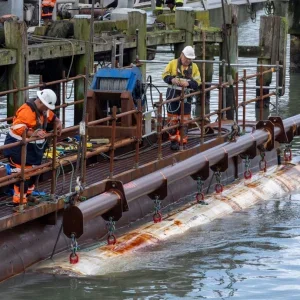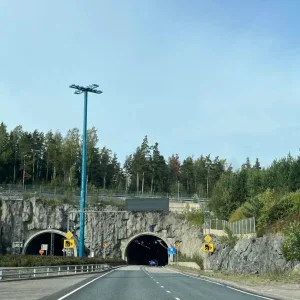Located at a depth of around 450m at Eurajoki, western Finland, the test tunnel simulates a real final-disposal tunnel. Excavation will continue until around April-May when the tunnel reaches 80m in length – which is shorter than the actual final-disposal tunnels that typically will be around 350m long. Once completed, four deposition holes will be drilled in the roof of the test tunnel for the trial.
According to Posiva worksite manager Kimmo Lehtola, once the tunnel reaches around 50m in length, the excavation will be interrupted, the base of the tunnel levelled out and the required compaction work done.
Lehtola explained: “Surveys and subsurface imaging measurements will be performed in the region of this block. They are used to confirm that the bedrock has no water flow-paths or discontinuities caused by the excavation. The method test is used to demonstrate that we can perform the work according to the plans and requirements.”
The ‘joint functional test’ will take place in 2023 when canisters will be placed in the bedrock but, as the exercise is purely to test procedure and methodology, they will not contain any spent nuclear fuel. Once the tunnel for the joint functional test is complete, excavation of the first five final-disposal tunnels will begin. Actual final disposal activities will begin in one of the tunnels around 2025, said Posiva construction manager Juha Riihimäki.
The construction and installation work, along with the encapsulation plant at Onkalo, form part of the EKA project. Posiva claims it will be the first company in the world to start the geological final disposal of spent nuclear fuel in the mid-2020s.







